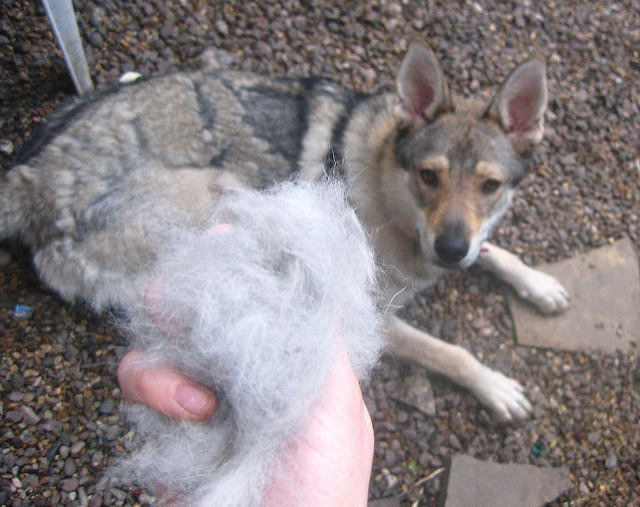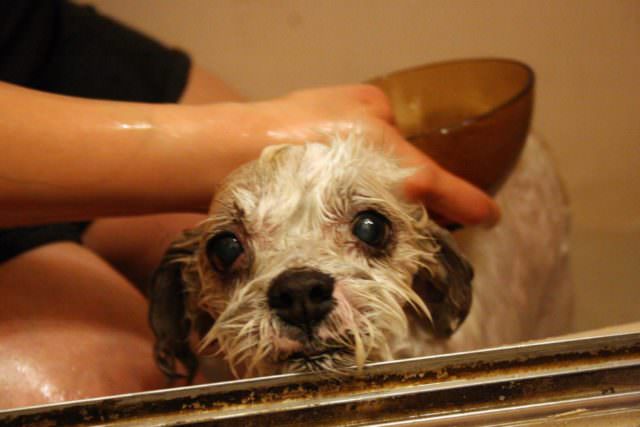Does your dog shed excessively? Most dogs shed at least a little, but some breeds shed more than average. After you’ve ruled out health issues like allergies, immune disease, or parasites (like fleas), there are some steps you can take to reduce your dog’s shedding. From WikiHow, WebMD, and Drs Foster and Smith, here are some ways to limit the amount of dog hair floating around your house.

1 – Change their diet. Many cheap dog foods are made using fillers that contain no nutritional value and are difficult to digest, such as corn and grains. Cheap dog food is the equivalent to human fast food. Sure, it will keep you alive, but it can cause health problems in the long run. You’re better off spending a little extra money on nutritious food for both yourself and your dog. Look for meat, and not byproduct, as the first ingredient.
2 – Supplement with omega-3. These fatty acids can reduce dandruff and improve the texture of your dog’s coat. As an added bonus, they can also curb stiffness and joint pain.
3 – Ensure your dog has access to plenty of clean water. Even mild dehydration will cause a dog’s skin to dry out, which will result in more dander and increased shedding. Moist food and treats can also help your dog stay hydrated.

4 – Brush your dog regularly. The hair is going to come out anyway; wouldn’t you rather it come out in a brush than in your house? A slicker brush or undercoat rake is best for dogs with longer hair, but dogs with short hair will benefit from a massaging glove. Rubber bristles help remove short hairs without irritating the dog’s skin.
5 – Wash and dry your dog once or twice a month. A monthly bath, with a blow dry if your dog will tolerate it, will help the undercoat fall out in the tub instead of on the carpet. Be sure to use a gentle shampoo designed for dogs. Never use human shampoo. Over-bathing can dry out skin, so try not to wash your dog too frequently.

For many dog breeds, shedding is a common occurrence. However, if your dog starts to shed more than usual or starts to develop bald spots, it’s time to take them to the vet to rule out serious health issues.

